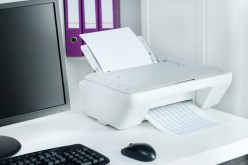The Benefits of Implementing Automated Shelving Systems in Warehouses
In today’s fast-paced business environment, warehouses play a crucial role in the supply chain management process. To ensure efficient operations and maximize productivity, it is essential for warehouse managers to explore innovative solutions. One such solution is implementing automated shelving systems. These advanced systems offer numerous benefits that can revolutionize the way warehouses function. In this article, we will explore the advantages of using automated shelving systems in warehouses.
Increased Efficiency and Productivity
With traditional shelving methods, warehouse employees often spend a significant amount of time searching for items and manually moving them from one location to another. This manual handling process can be time-consuming and prone to errors. However, by implementing automated shelving systems, these inefficiencies can be eliminated.
Automated shelving systems use advanced technology such as barcode scanning and RFID (Radio-Frequency Identification) tags to track inventory accurately. This not only reduces the time spent searching for items but also minimizes errors in order fulfillment. With the ability to locate items quickly and accurately, warehouse employees can focus on more important tasks, leading to increased efficiency and productivity.
Optimal Space Utilization
Space utilization is a critical factor in warehouse management. Traditional shelving methods often result in wasted space due to inefficient storage configurations or inadequate organization techniques. Automated shelving systems address this issue by optimizing space utilization through intelligent design.
These systems are designed with adjustable shelves and customizable configurations that cater to different types of products and their specific storage requirements. By utilizing every inch of available space efficiently, warehouses can store more items without expanding their physical footprint. This not only maximizes storage capacity but also reduces costs associated with renting or building larger facilities.
Enhanced Inventory Management
Accurate inventory management is vital for any warehouse operation to run smoothly. Manual tracking methods are prone to errors such as miscounts or misplaced items, leading to discrepancies between actual and recorded inventory levels. These discrepancies can result in delays, stockouts, or even financial losses.
Automated shelving systems streamline inventory management by providing real-time data on item locations, quantities, and movement. With a centralized database that automatically updates inventory levels as items are added or removed from shelves, warehouse managers can have complete visibility into their inventory. This enables them to make informed decisions regarding stock replenishment, order fulfillment, and overall supply chain management.
Improved Workplace Safety
Warehouse operations involve heavy lifting and manual handling of items, which can pose safety risks to employees. Automated shelving systems help mitigate these risks by minimizing the need for manual labor-intensive tasks.
By automating the process of moving items from one location to another, these systems reduce the physical strain on employees. This not only minimizes the chances of injuries but also creates a safer working environment overall. Additionally, automated shelving systems are often equipped with safety features such as sensors that detect obstructions or potential hazards, further enhancing workplace safety.
In conclusion, implementing automated shelving systems in warehouses offers numerous benefits that can significantly improve efficiency, productivity, space utilization, inventory management, and workplace safety. By embracing these advanced technologies, warehouse managers can stay ahead of the competition and optimize their operations for success in today’s rapidly evolving business landscape.
This text was generated using a large language model, and select text has been reviewed and moderated for purposes such as readability.






